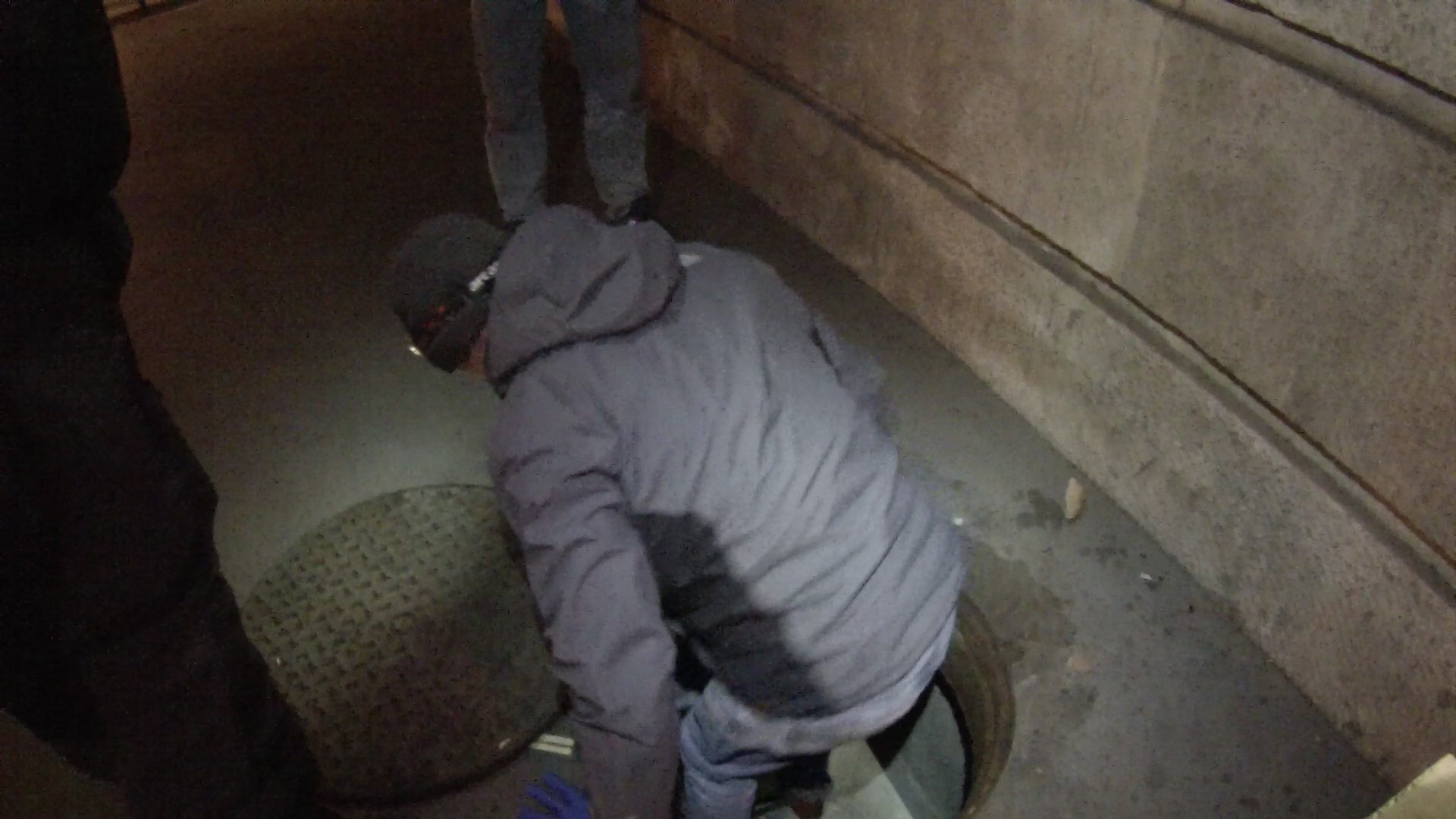This ongoing research focuses on the subterranean layer of the constructed landscape, by using a passage souterrain in Paris’ 16e Arrondissement and the reasons that led to its closing as a subject of study. The underpass was closed in 2012 as part of a renovation plan that affected the right bank of the Seine’s walkside.
Between 2005 and 2012 Mario Canal used the underpass as a punctual exhibition space, organizing a series artistic exhibition without an official permit. The online documentation of such an action, left an unexpected archive that revealed the existence of the passage souterrain even after its sudden closing.
This information suggested that last one of Canal’s intervention might have remained trapped, under the pavement until today, in the now invisible passage.
This early though led me to a satirical comparison to the discovery of caves with prehistoric paintings or human remains. By elevating it to the status of archaeological monument, inaccessible to the public, the logical way to seemed to be its study and later on, recreation in a museum setting, as a facsimile or doppelgänger.
During a three-months-residency in Paris I focused, among others, on the following points:
+ Urban historical context; a change of priorities between humans and cars in the city.
+ The figure of the underpass as a purely functional structure fitting Marc Auges definition of the “non lieu”.
+ Negative connotations of “being below” and in general, implications attributed to the subterranean layer of the landscape.
+ Importance of preveiling invigilated and invisible spaces as part of the accessible und public urban landscape.
+Real and fictive history of Paris’ underground from the construction of the anciennes carrières until today.
+Reasons that lead to the reproduction of a physical space.










